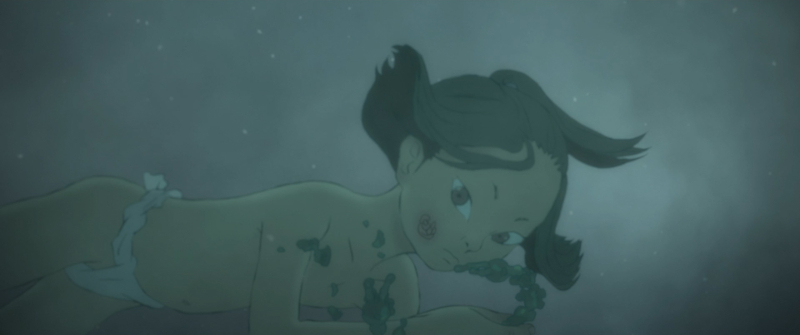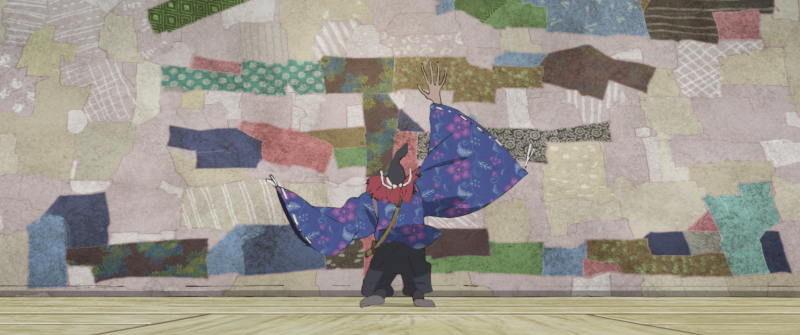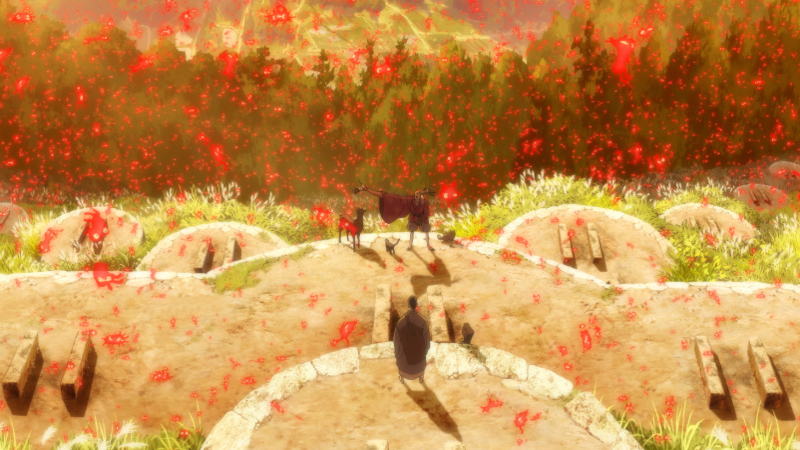Director – Masaaki Yuasa – 2021 – Japan – Cert. – 98m
***1/2
In fourteenth century Japan, a blind musician and a deformed, masked dancer shake up the culturally staid world of Noh theatre by forming a hugely popular rock band – out in UK cinemas on Wednesday, September 28th
You never quite know what you’re going to get with an animated feature by Masaaki Yuasa (Ride Your Wave,2019; Lu Over the Wall, 2017; Mind Game, 2004) as he has a tendency to break with tradition. Here, he takes on periods of Japanese history but rather than go with power struggles as to who rules Japan, he focuses on two outcasts, an orphaned musician and a deformed dancer, who join together to form a rock band with an emphasis on theatrical showmanship to upend the artistic conventions of the day and become an overnight sensation until the ascendant ruler, determined to control the historical narrative, has the musician killed, and the dancer emasculated, forbidden to perform anything but state-approved material, and that only in the Imperial court.

It’s a triptych, one long story split into three sections. In the first section, after a prologue detailing the decisive Battle of Dan-No-Ura towards the end of the twelfth century, in which the Heiji clan were defeated by the Genji and the formers warriors threw themselves into the sea and perished, two centuries later in the period of the Northern and Southern Courts, Northern would be Kyoto-based, shogunate emperor Ashitaka decides that the power to rule demands he acquire three sacred treasures, one of which is a sword buried in the lake at Dan-No-Ura. When in the fourteenth century fisherman’s son Tomona, a regular diver in the lake, retrieves the sword for Ashitaka’s shady emissaries, it promptly kills his father by slicing him in two at the waist and in a less fatal blow blinds Tomona who is thereafter reduced to the life of a wandering musician, eking out a living by playing songs to anyone who’ll listen.
Meanwhile, the deformed Inu-Oh (literally ‘king of the dogs’) is shunned by his father who is training the boy’s siblings as dancers. Inu-Oh has one hand growing out of the side of his head while the other is on the end of a very long arm as if he were a mutant gibbon, and he runs around using this single arm in much the same way an ape uses its arms to get around, swinging over the ground. Forced to wear a mask from birth, he bonds with the blind Tomona when his mask’s removal faults to elicit the usual horrified response, because the blind musician can’t see him. Inu-Oh is haunted by the ghosts of the fallen Heiji warriors, undead spirits unable to rest until their story has been told to the world.

In the second section, which to all intents and purposes is a rock musical, the duo discard traditional musical form in favour of a full on rock band working with theatre, dance and spectacle to tell the dead warriors’ stories, relating a different warrior’s story with each separate performance. They begin with Inu-Oh dancing to Tomona’s songs at an impromptu gig on a bridge where crowds gather and people abandon watching the local Noh theatre to watch the band present something completely different. Aurally it sounds like a heavy rock band but visually has a drummer fitted with a Japanese drum strapped to his chest in the manner of an English marching band, an upright double bass player rather than an electric one and Tomona playing his traditional Japanese ‘beetle’ rather than an electric guitar. To this listener’s ears, the music sounds pretty bland, but it’s clearly supposed to contrast with the music that accompanied the Noh theatre of the day in which respect it would have been breathtaking (such a shame it doesn’t actually sound it).
By way of contrast, Inu-Oh’s contribution, the visual aspect of the shows, is genuinely spectacular, although the idea of watching a full scale, twentieth century rock concert in the fourteenth century is pretty odd. For example, his “Story Of The Whale’” number (accompanied by a drum beat almost identical to Queen’s “We Will Rock You” with audience hand-clapping encouraged by Inu-Oh) has images of a lighted, anti-silhouette of a whale moving over a dark projection screen on the stage as Inu-Oh ascends by means of some deft wire work. This is effective enough in animation, but one could imagine it being far more effective in live action, if done well, although it would be horrendously expensive to do well. Arguably more impressive are the gig crowds, presented in subdued mauves and greys to set off the highly coloured palette of Inu-Oh’s performances. This second section of the film is almost a rockumentary featuring full length live music numbers in and on assorted venues and stages.

In the third section, the authorities clamp down on them as Ashitaka seeks to consolidate the North’s grip on power. Biwa priests are seen to frown upon the new-fangled music as bringing Noh tradition into disrepute, but that seems a lightweight approach compared to that meted out by Ashitaka’s samurai, with priests lined up for execution by the sword and feet trampling on banners lying everywhere on the ground. Tomona goes from cocky rock star to harshly treated, bloodily skewered, political prisoner in a heartbeat, while the more fortunate Inu-Oh falls from seemingly unassailable stage stardom to puppet performer in the emperor’s court. An unconvincing epilogue has the ghosts of the two men reunited and reconciled in modern day Kyoto.
Yuasa’s narrative is often confusing and the film feels far less straightforward than the above description implies when you’re actually watching it. It assumes a knowledge of Japanese history which international audiences simply may not possess. The visuals go some way to compensate – the rock performances, provided you can get past both the bland music, are enthralling to look at, as is the visualisation of peasant, cultural and court life in fourteenth century Japan. The anachronistic aspect of placing a rock band at that time period, clearly meant to show the predominant Noh form as dull and staid by comparison, doesn’t really work though. In the end, it’s a mish-mash of arresting ideas that never quite raise the film up to the level required to make those ideas truly compelling.
Inu-oh is out in cinemas in the UK on Wednesday, September 28th. It also plays Scotland Loves Anime with a director Q&A on Friday 21st October.
Trailer:
